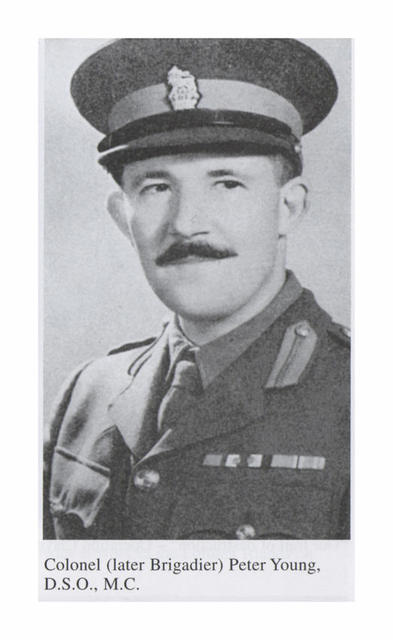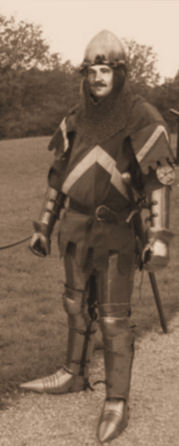The Secret Wargaming History of Literary Giants
Posted: Wed Apr 01, 2020 7:47 am
First published on my Vintage Wargaming Blog ten years ago today, in case you are interested and missed it then.

Reference has already been made in previous posts on Vintage Wargaming to the contribution of well known literary figures to early wargaming. These include Robert Louis Stevenson, A.J. Symons, H.G Wells and even Guy Debord.
Less well known is the involvement of a small group of academics and authors in Oxford in 1939, based on the Inklings group and their meetings at the Eagle and Child, and a young subaltern from the Bedfordshire and Hertfordshire Regiment. Even less well known is the contribution their wargaming may have made to some of the most famous and well loved books of the second half of the 20th Century.
The academics and authors were J.R.R Tolkien, the Rawlinson Professor of Anglo Saxon, and C.S. (Jack) Lewis, Fellow and Tutor of Magdalen College. Both men had served on the Western front in the First World War, Tolkien with the Lancashire Fusiliers, and Lewis with the Somerset Light Infantry. Tolkien was invalided out in 1916, while Lewis went to France in 1917. Their experience of war left a lasting impression on both men, and Tolkien’s obsession with trenches is reflected in his later work in the Lord of the Rings trilogy. The subaltern was a young officer called Peter Young, who seems to have visited Oxford at irregular intervals to buy military footwear (including commando boots) from the well known Oxford outfitters Walters of the Turl. It may have been on one of these occasions that Peter Young attended a meeting of the Inklings – whether by invitation or accidental presence in the pub on a Tuesday morning is unknown – and met and befriended Lewis and Tolkien
For different reasons all three men sought an escape from their personal experiences of war. It seems that they evolved a complicated fantasy medieval world, where they fought at irregular intervals a mixture of a role playing and wargame campaign, punctuated and inspired by alcoholic intake at the Eagle and Child. Each man ruled an independent kingdom with castles, peasants and armies. Their name for this game was “Donjons and Flagons”, and it was fought using the patriotically incorrect (for the time) Elastolin composition Ritterfiguren (knights) bought by Lewis and Tolkien from Boswells in Broad Street. The embarrassing source of these figures from Germany may have been one of the reasons for the very sketchy detail that has existed to date about this game.
It is interesting to speculate whether this interest in mythical worlds contributed to Lewis’s development of the Narnia books between 1949 and 1954, Tolkien’s writing of the Lord of the Rings trilogy which was published in 1954 and 1955, and even to the Seven Years’ war campaigns described in Charge!
Intriguingly a recent discovery among J.R.R. Tolkien’s papers in Merton College Library (he became Merton Professor of English Language and Literature in 1945) suggests there may have been an additional element in this game – re-enactment. College Librarian M. R. Benn has discovered a previously unrecorded envelope containing two documentary fragments – a faded photograph, inscribed in Tolkien’s handwriting, “Peter Young playing the game, in the garden of 20 Northmoor Road, September 1939”, and the other a bill for hire of three medieval costumes from Walters of the Turl, also dated September 1939.
With permission of the College, the photograph is reproduced here.


Reference has already been made in previous posts on Vintage Wargaming to the contribution of well known literary figures to early wargaming. These include Robert Louis Stevenson, A.J. Symons, H.G Wells and even Guy Debord.
Less well known is the involvement of a small group of academics and authors in Oxford in 1939, based on the Inklings group and their meetings at the Eagle and Child, and a young subaltern from the Bedfordshire and Hertfordshire Regiment. Even less well known is the contribution their wargaming may have made to some of the most famous and well loved books of the second half of the 20th Century.
The academics and authors were J.R.R Tolkien, the Rawlinson Professor of Anglo Saxon, and C.S. (Jack) Lewis, Fellow and Tutor of Magdalen College. Both men had served on the Western front in the First World War, Tolkien with the Lancashire Fusiliers, and Lewis with the Somerset Light Infantry. Tolkien was invalided out in 1916, while Lewis went to France in 1917. Their experience of war left a lasting impression on both men, and Tolkien’s obsession with trenches is reflected in his later work in the Lord of the Rings trilogy. The subaltern was a young officer called Peter Young, who seems to have visited Oxford at irregular intervals to buy military footwear (including commando boots) from the well known Oxford outfitters Walters of the Turl. It may have been on one of these occasions that Peter Young attended a meeting of the Inklings – whether by invitation or accidental presence in the pub on a Tuesday morning is unknown – and met and befriended Lewis and Tolkien
For different reasons all three men sought an escape from their personal experiences of war. It seems that they evolved a complicated fantasy medieval world, where they fought at irregular intervals a mixture of a role playing and wargame campaign, punctuated and inspired by alcoholic intake at the Eagle and Child. Each man ruled an independent kingdom with castles, peasants and armies. Their name for this game was “Donjons and Flagons”, and it was fought using the patriotically incorrect (for the time) Elastolin composition Ritterfiguren (knights) bought by Lewis and Tolkien from Boswells in Broad Street. The embarrassing source of these figures from Germany may have been one of the reasons for the very sketchy detail that has existed to date about this game.
It is interesting to speculate whether this interest in mythical worlds contributed to Lewis’s development of the Narnia books between 1949 and 1954, Tolkien’s writing of the Lord of the Rings trilogy which was published in 1954 and 1955, and even to the Seven Years’ war campaigns described in Charge!
Intriguingly a recent discovery among J.R.R. Tolkien’s papers in Merton College Library (he became Merton Professor of English Language and Literature in 1945) suggests there may have been an additional element in this game – re-enactment. College Librarian M. R. Benn has discovered a previously unrecorded envelope containing two documentary fragments – a faded photograph, inscribed in Tolkien’s handwriting, “Peter Young playing the game, in the garden of 20 Northmoor Road, September 1939”, and the other a bill for hire of three medieval costumes from Walters of the Turl, also dated September 1939.
With permission of the College, the photograph is reproduced here.
